This is another post from the same lengthy thread as the last one. I discovered this thread because I've been looking into constructive drawing. For some reason, even though I learned this stuff (to some extent) from Hogarth, Vilppu, Hale and on and on, I don't feel like I have a clue how to do it. I probably didn't spend enough time with it, and I think I need to revisit it and really learn about it now that I'm getting all serious, into what I consider my academic years. This post gives a very clear overview of changing tastes in academic programs and the resulting drawing approaches - why today's supposedly 'classical' ateliers actually teach a very modern photograph-derived method of drawing. I'll outline my thoughts in a followup post.
Interestingly enough, Mr. Kazakov's teaching sounds VERY similar to what we learned in Vilppu's class. Glenn bases his teaching on his intensive study with Michelangelo, Pontormo, Greuze and others. In addition to the concepts of understanding gestural flow (energy from one limb to the next, but also in the whole figure, and throughout the composition), seeing through, 3D thinking, perspective and construction, he teaches us to use tone as a tool to further define and clarify the form.
So it's not about copying, rather it's about communicating the form in the clearest, most effective manner (which sometimes includes eliminating cast shadows). To be honest, I feel like most people (including his students) never get a full grasp of what Glenn is teaching, and see his instruction more as training "for animators". His classes generally have shorter poses (the longest we had was 1 hour) but it doesn't mean that his approach can't be followed for longer drawings.
In rendering, he encourages us to think logically and use lines that go over the form, trying to feel every bump and hollow in the surface, but he expects to study anatomy and know why each bump is there. I'm not the best example of Glenn's approach, but I have learned a lot and have tried to follow it as far as my skills have allowed for now. If you're curious you can see them at
http://highonturpentine.blogspot.com.../label/drawing
Some work by Glenn
http://s39.photobucket.com/albums/e1...simpson/glenn/
and some by my other teacher and mentor, Will Weston, who studied with Glenn
http://www.willwestonstudio.com/teachingdownloads.html
Regarding the change in drawing (which did in fact occur around 1830)...it is a common thread in the European academies. You will notice certain key differences in drawings produced before and after this time. In the 18th century, and early 19th, drawing with understanding of the form was institutionalized and probably at its peak as a whole. The drawings of Brullov in Russian, Louis Cheron in France, and numerous artists in Spain attest to this. Drawings were generally done with a pointed instrument, which lends itself to more dimensional thinking, in the sense that "shading" was done with crosshatching and feeling/experiencing the form. I think David's power grab in France has something to do with the change in European art education. He obviously was trained in the old traditions of painting, much like Greuze or Boucher, but he rejected some of their methods, like the transparent shadow, opaque lights approach...in favor of solid painting all over...and painting one bit at a time i.e. windowshading. He still drew in a primarily linear way, but I think he set the stage for the changes that occurred later.
Students at this time also spent more time in front of the model. I believe the figure was something like 6 hours for a figure drawing in the 18th century (3 x 2 hr sessions), while in the newly formed institutions, it was upped to like twice that or more. (I'll post the name of the book that I got this from later)
At this time, the academies started preferring charcoal as the medium for academies, like today. This is important, because charcoal is generally a broad, tonal medium, it's not particularly suited for drawing through and doing linear construction. This might mean that draftsmen had different goals in drawing and picked a tool more appropriate to their task.
Moreover, photography was being developed and brought to full operation at the same time that these changes occurred!
"Photography as a usable process goes back to the 1820s with the development of chemical photography. The first permanent photograph was an image produced in 1825 by the French inventor Nicéphore Niépce. However, because his photographs took so long to expose, he sought to find a new process. Working in conjunction with Louis Daguerre, they experimented with silver compounds based on a Johann Heinrich Schultz discovery in 1724 that a silver and chalk mixture darkens when exposed to light. Niépce died in 1833, but Daguerre continued the work, eventually culminating with the development of the daguerreotype in 1837. " (wikipedia)
I imagine seeing photography for the first time made people re-evaluate how they drew, especially those who were dedicated to the precise imitation of the visual aspects of nature. The idea that flat shapes could be copied like a jigsaw puzzle probably came from this. That is basically drawing the visual field.
The question might have also been...what is reality? is it the world as we see it with our eyes? or is it the way we experience it with our sense of touch?
In a widely circulated writing about Sargent, we can find further evidence
"Mr. George Moore, in one of the most illuminating essays in Modern Painting, said: "In 1830 values came
upon France like a religion. Rembrandt was the new Messiah, Holland was the Holly Land, and disciples
were busy dispensing the propaganda in every studio." The religion had no more ardent apostle than
Carolus Duran." -http://www.goodbrush.com/misc/painting_lessons/sargent_notes.pdf
Recently, a whole series of 18th century drawings from the Spanish academy were posted online. The difference between late 19th century drawing and it's earlier predecessor is very clear and it's interesting because they're from the same institution.
18th century drawing

late 19th century drawing

Note that the first one has a more sculptural feel...appealing to the sense of touch. In the sense that it feels tangible, it's more real.
The second one is more visually real...from the standpoint of sight, it's more real than the other one.
However, because of the intensive anatomy training at the academies, even the 2nd drawing has strong sense of form. That is what we've lost in most ateliers of today. A lot of figure drawings are basically rendering exercises, which get precise values, but no knowledge of structure. I think the figure drawings of today are also the longest ever. In the 19th century, I believe drawings took at most 40 hours, the norm was more like 15-20. Today, some places have 75 hour poses (FAA). In the ateliers of 19th century France (Bonnat, Gerome, Duran) the norm was a week-long pose, usually 3 hours with the model if I'm not mistaken.
Julian Alden Weir's study from Gerome's atelier
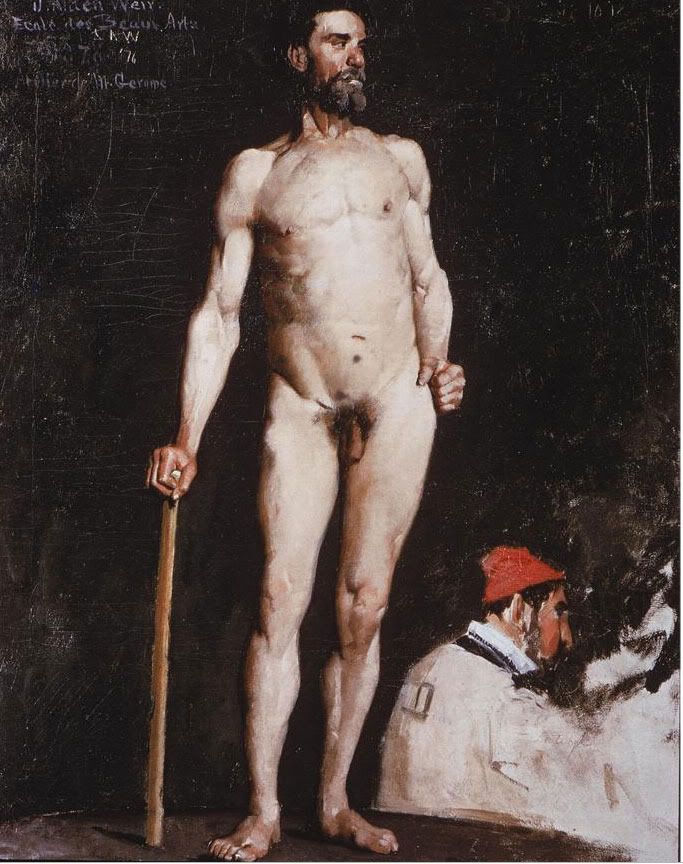
Albert Edelfeldt, atelier Bonnat
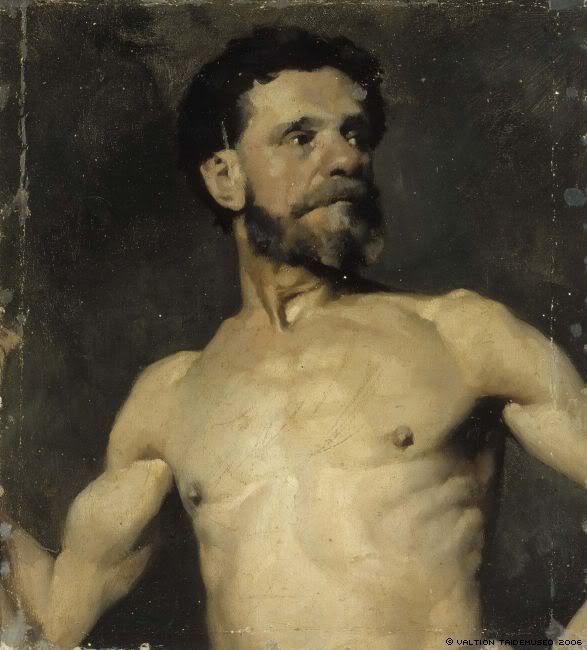
Notice how these still feel structural (in a planar sense)
Compare with current atelier work (Angel)


Angel is actually one of the best ateliers, and these studies are good, but in my opinion, they lack the clear articulation and knowledge of structure of times past.
I should be bringing this to a close now, so I'll just put up some more examples as food for thought. On the questions of whether the ecole des beaux arts taught 2d shape copying. I think by the late 19th century, yes they did to some degree (see below)
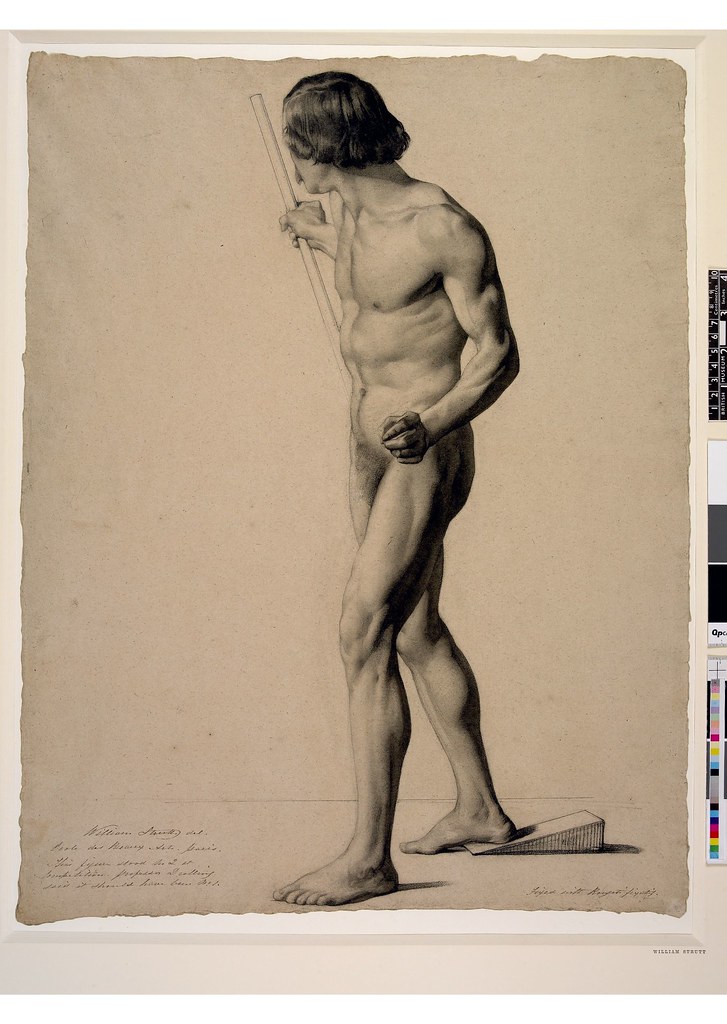
But these were school studies. A mature artist like Cabanel drew much like a Renaissance draftsman
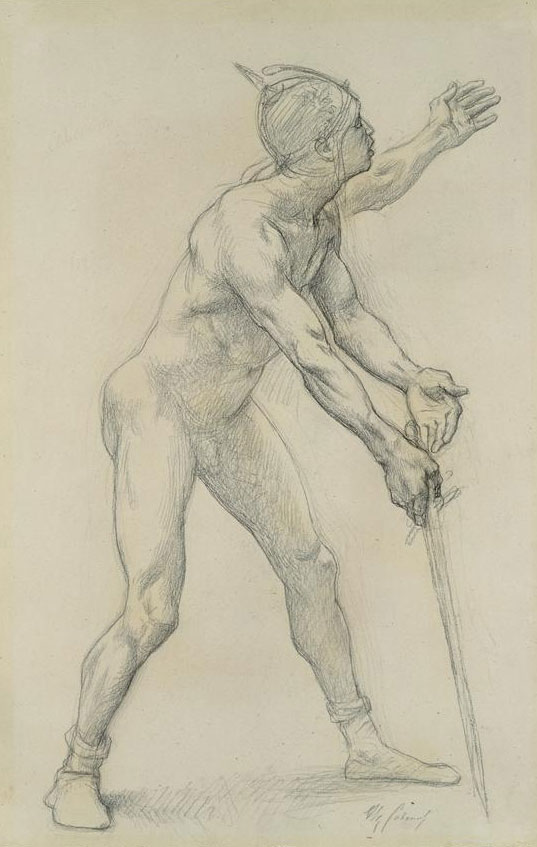
And the British draftsmen like Leighton and Poynter always drew with the point, following the form and understanding structure.
Poynter
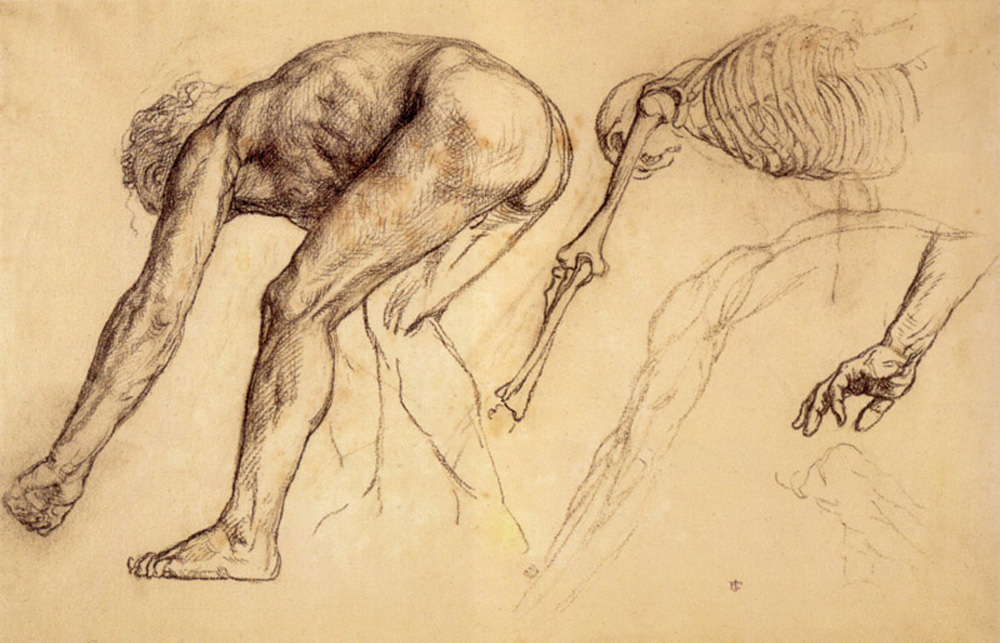
Leighton
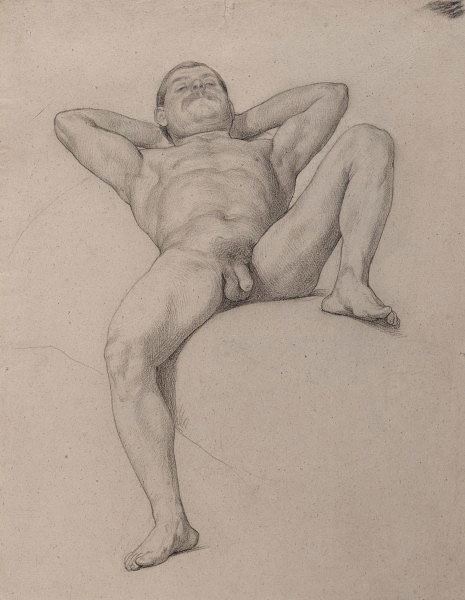
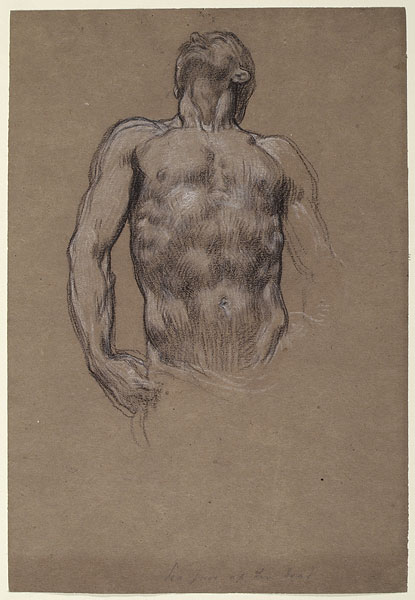
Anyway, I'm really enjoying this discussion. I think most art students (like most people) passively accept information given to them by their teachers, without researching on their own and questioning why things are taught the way they are. Like all the claims about ateliers being "classical" or, "in the manner of the old masters"...look that stuff up, they're not.
Followup post:
I guess I've always felt that there was really no one particular school where you could learn the 'whole enchilada' if you were really interested in the kind of Renaissance approach to drawing with the exemplars of Michelangelo, Pontormo, et al. I agree with Ramon's assessment of the weaknesses of the Florentine ateliers - the drawings coming out of there are *amazing*, but they are missing that special something / spark of life which comes from a Renaissance style drawing which the 'Art Center' style sort of mimics in a watered down, stylized, and animation influenced way. If you are interested in Barque drawing (which I think is fantastic) that's one valid approach, but I agree that you probably need both approaches to get the ultimate in a drawing education. I'd like to note that Otis College of Art, where I teach, teaches somewhat similarly to the Denmark drawing academy, in that it is primarily based on Gottfried Bammes, and layers of analytical, analogy based drawing using the point of the pencil or charcoal, and not shading. Teaching in this style has definitely informed my personal understanding of drawing, but of course I love the more emotionally responsive, gestural style of Art Center / Vilppu as well.
No comments:
Post a Comment